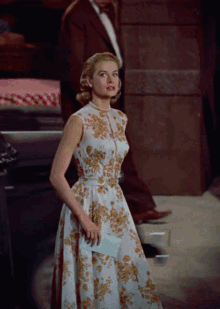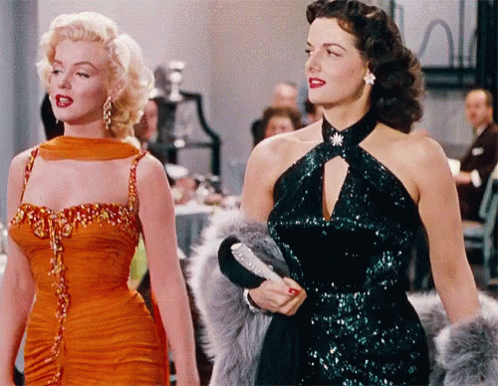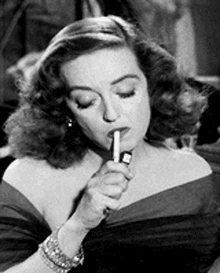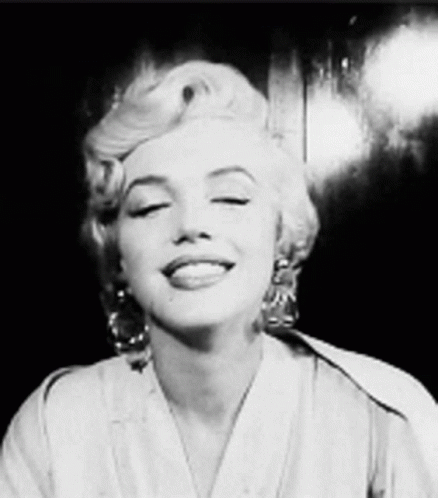“The Building of Popular Image” is an article written by Thomas Harris. The article is brief however it discusses many techniques that go into making the most famous stars such as Marilyn Monroe and Grace Kelly famous.
It’s interesting that the author chose these two stars to focus on mainly because they couldn’t be more different in their public appeal. Monroe was advertised to “illicit male sexual desire”. However, Kelly was a “respectable” lady. She had strong family ties and an “elegant” and “reserved” way about her.
Harris used these actors to highlight key ways that studios create stars and what kind of publicity they use. They like to take the stereotype that they believe the stars fit into and emphasize those traits to the public. The “star system” is based on the idea that a star is only accepted by the public for a certain set of traits that commonly make up a stereotype. To keep the star and the public happy, they focus in on these stereotypical traits and try to avoid publicizing behaviors that don’t fit within the chosen stereotype.
So when it comes to Marylin Monroe, they would focus more on her pin-up girl history than say her family ties. When it comes to Grace Kelly, however, they would emphasize her happy marriage and try to avoid any publicity that suggests affairs the star has had. It all depends on what the star-accepted image is. This is also reflected in movies and tv show roles. The star will be encouraged to partake and either more sensual roles when it comes to Marilyn or more matronly roles when it comes to Grace.
This rigid structure of only allowing certain publicity into the light shocked me, to be honest. It doesn’t seem to have anything to do with who the actor or actress really is. In fact, keeping a star’s truth just outside of public reach is something Harris discusses. The more we see about them publicly, the further our knowledge of the truth becomes. This idea of a star being unreachable or untouchable by the public is something that keeps everyone on the edge of their seat. They go to the movies with the hope of discovering something real about the star.
I do wonder how much of a say the actors get in all of this planning.  At the time, Kelly and Monroe seem to emphasize two sides of society’s expectations of women. On one hand, Marylin is sexual and wants to please men, and is pleasing to the eye. Kelly is the same except it’s from a matronly standpoint. She wants to be a good wife and mother. But they both seem to be at the whim of what men at the time wanted to see. Although in Monroe’s movie “Gentlemen Prefer Blondes” Marylin is depicted as charming and somewhat witty in the ways she can get out of trouble, she plays into being stupid specifically when men are around. I haven’t seen any of Grace Kelly’s movies but I expect that her behavior on her own and in the eyes of men is probably different as well.
At the time, Kelly and Monroe seem to emphasize two sides of society’s expectations of women. On one hand, Marylin is sexual and wants to please men, and is pleasing to the eye. Kelly is the same except it’s from a matronly standpoint. She wants to be a good wife and mother. But they both seem to be at the whim of what men at the time wanted to see. Although in Monroe’s movie “Gentlemen Prefer Blondes” Marylin is depicted as charming and somewhat witty in the ways she can get out of trouble, she plays into being stupid specifically when men are around. I haven’t seen any of Grace Kelly’s movies but I expect that her behavior on her own and in the eyes of men is probably different as well.
In regards to female inspiration, I don’t find a lot of it in either of them. Certain parts of me relate to them but not as a whole. I think that the perpetuation of these two-dimensional female roles might have been bad for women in the long run. Expected by men to be either easy or not. Yes, or no, children or no children. That’s not how real people or real women are. I know that this preserves them as a star and that they probably can’t help what their publicists do but I wonder if they were uncomfortable with what the headlines said.
I did enjoy Monroe in “Gentlemen Prefer Blondes” and felt some inspiration in her charm and ability to gain what she wanted. Her acting skills are amazing and yet funny in the way she would change her voice when a man was around. This sort of soft-spoken child voice left men speechless. There is power in getting any man you want. Until it’s reality and most women don’t enjoy that kind of attention. The emphasis on Loreli and her undying friendship with Dorothy (Jane Russell) inspired me a bit. Even though they are different women with different goals, they stand by each other no matter what. I felt this display of Monroe encouraging female support was important and a good addition to the film. Women overall should support each other regardless of our prospects for men. That’s the real takeaway.

Gentlemen Prefer Blondes. Directed by Howard Hawks, Twentieth Century Fox, 1953.
Harris, Thomas. The Building of Popular Images. 1957.




